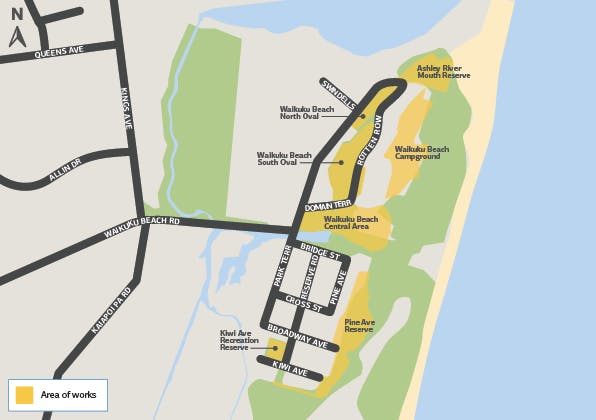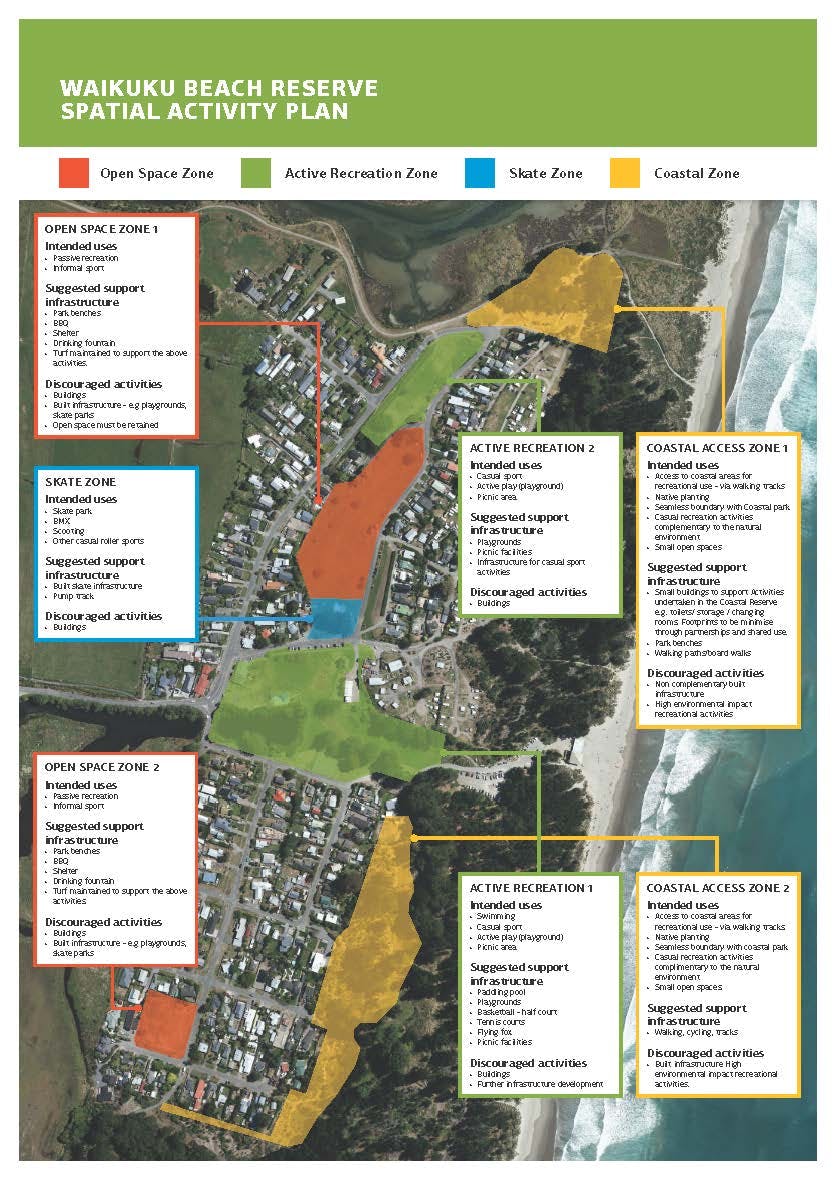Waikuku Beach Reserves Spatial Plan
Feedback has now closed.
We’ve created a spatial plan to help us make decisions on how the Waikuku Beach Reserves should be used now and into the future. Let us know what you think.
A spatial plan will help us to ensure the community can enjoy and utilise these spaces to the fullest, while also protecting any areas of natural and cultural significance.
When creating the draft plan we considered existing uses, proposals received from the community, the existing Waikuku Beach Reserve Management Plan and feedback and ideas from the Waikuku Community.
We want to know if you think we’ve got the right balance of recreational, open and natural space so that we can enjoy but also protect the reserves.
What is a spatial plan?
A spatial plan is essentially a ‘blueprint’ for how space can or should be allocated to ensure it’s used in the most strategic, effective and responsible way.
It outlines a vision and broad set of principles to visually illustrate how a space will look, feel and operate.
The Waikuku Beach Reserves Spatial Plan will allow us to ensure that community groups/ activities that want to use the reserves are allocated space in a considered and appropriate way.
This means that we can safeguard the space over the long term, ensuring that we’re caring for the environment and be considerate of the community.
What we're proposing?
The draft Spatial Plan divides the reserves into four types of zones:
- Coastal access zones
- Open space zones
- Active recreation zones
- Skate zone
Each zone serves a specific purpose and has intended uses.
Coastal Access Zones:
- Access to coastal areas for recreational use – via walking tracks
- Native planting
- Seamless boundary with Coastal Park
- Casual recreation activities complementary to the natural environment
- Small open spaces
Open Space Zones:
- Passive recreation
- Informal sport
Active Recreation Zones:
- Casual sport
- Swimming (where applicable)
- Active play (playground)
- Picnic area
Skate Zone:
- Skate Park
- BMX
- Scooting
- Other casual roller sports
Each respective zone also has ideas for infrastructure which may encourage these activities within each zone, as well as activities that are discouraged.
Next steps
It’s important to note that while the Spatial Plan sets out the types of activities that are appropriate for each zone, any activity proposal will still need to go through the appropriate approvals process and any funding support from Council will need to be sought through the Long Term Plan.
Once feedback closes staff will prepare a report for the Woodend Sefton Community Board. The Board will determine at that time whether to support the Waikuku Beach Reserves Spatial Plan.
Feedback closes at 5pm, Sunday 27 November.




